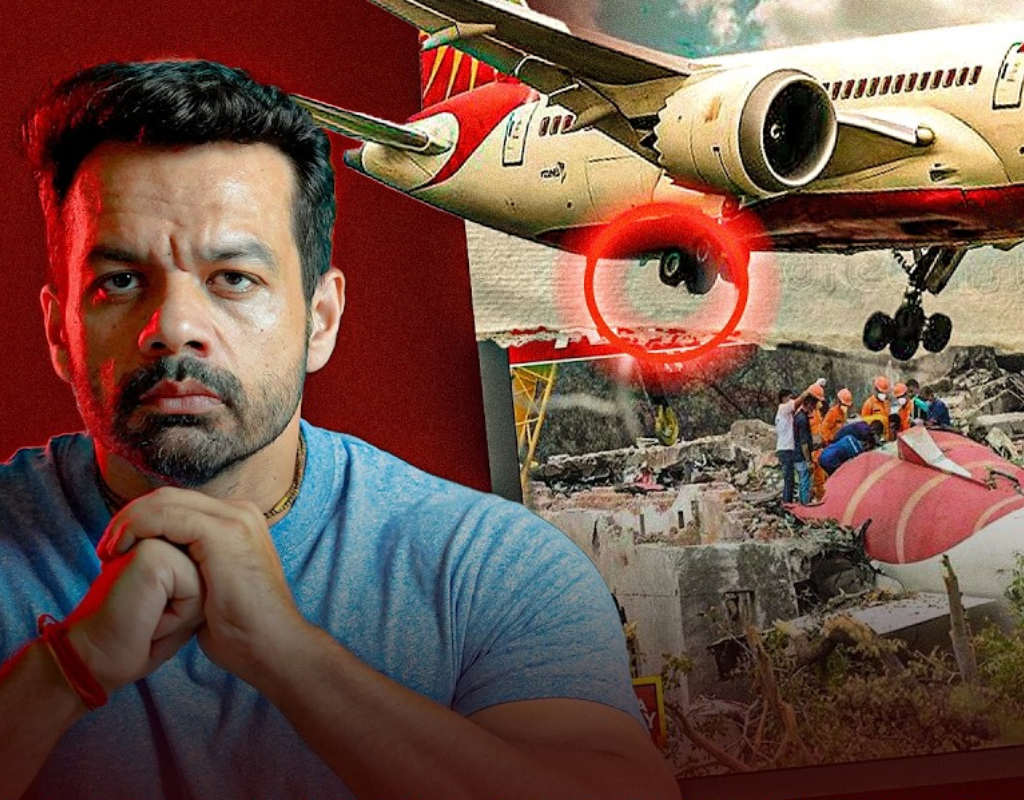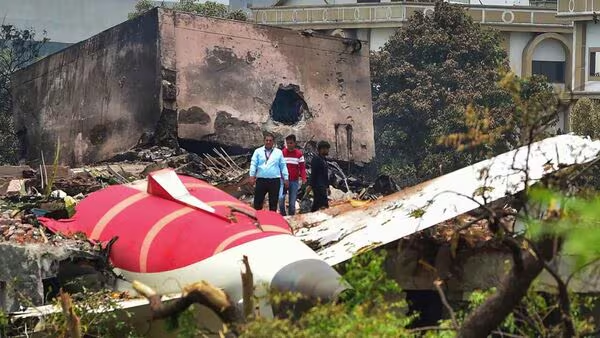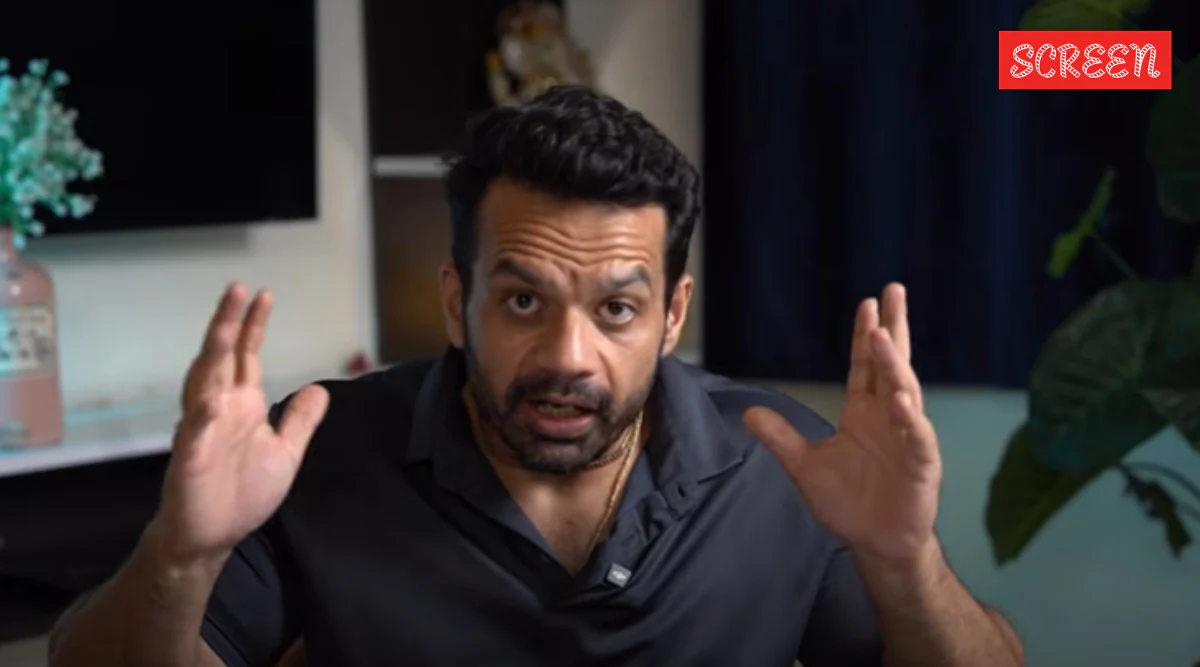Now Reading: Air India Flight 171 Ahmedabad Crash: A Deep Dive into the Tragedy, Expert Analysis, And the Unfolding Investigation
-
01
Air India Flight 171 Ahmedabad Crash: A Deep Dive into the Tragedy, Expert Analysis, And the Unfolding Investigation
Air India Flight 171 Ahmedabad Crash: A Deep Dive into the Tragedy, Expert Analysis, And the Unfolding Investigation

The country grieves after the catastrophic Air India Flight 171 crash on June 12, 2025, in Ahmedabad. The London Gatwick-bound Boeing 787-8 Dreamliner crashed fatally into the hostel block of B. J. Medical College soon after liftoff, killing 241 individuals on board the plane and 19 on the ground.
This tragic accident is a dark day in aviation history, the first hull loss and fatal accident of the Air India 787 Dreamliner, and the first fatal hull loss for Air India since the Kanishka bombing of 1985.
The magnitude of the tragedy has left many asking questions, and immediate investigations and extensive debates are taking place regarding aviation safety.

In the midst of shock and grief, Gaurav Taneja, an ex-commercial pilot and extremely popular YouTuber ‘Flying Beast,’ has become a very vocal voice in unraveling the puzzle of the tragedy.
Drawing on his wealth of aviation knowledge, Gaurav Taneja provided an early, itemized analysis in his popular video, “Air India 171 Ahmedabad Crash | EXPLAINED !!”
His analysis, though early and founded on public data, has helped to advance public knowledge and has fueled vital discussions about the possible factors involved in Air India Plane Crash.

This in-depth article examines the immediate events following the crash, condenses Taneja’s eight potential reasons, offers the latest on the on-going official investigation, and discusses the wider implications for aviation safety.
The Unfolding Tragedy: A Timeline of the Air India Flight 171 Disaster
Air India Flight 171, with 230 passengers (13 children and 2 infants) and 12 crew, took off from Runway 23 of the Sardar Vallabhbhai Patel International Airport in Ahmedabad at 13:38 IST (08:08 UTC) on June 12, 2025.
At the time of takeoff, the weather was noted to be light winds (3-6 knots), 6 kilometres visibility, and no notable clouds, meaning no detrimental environmental conditions.
But about 30 seconds after takeoff, when still in a very rough wings-level and nose-up attitude, the aircraft had a very rapid descent.
The Air India pilots made a Mayday call, stating that there was a catastrophic failure of power and thrust. Eyewitnesses indicated that the plane flew low by a great margin, then produced a deafening crash and several explosions as it hit the residential complex of B. J. Medical College.
The Air India’s crash location, about 1.5 kilometers from the runway, witnessed fragments of the tail section of the aircraft jam into the hostel building, resulting in ferocious fires reaching an estimated 1,500 °C.
Rescue efforts began right away, with several fire trucks, ambulances, and National Disaster Response Force (NDRF) units rushed to the accident site.
The ferocity of the fire made things difficult, but workers toiled day and night amidst the ruin. Though most onboard died, an incredible lone survivor, a 40-year-old British national, was rescued from seat 11A by an emergency exit, who had been ejected as a portion of the plane had broken away.
Identification of the victims was badly affected by the intense heat, such that DNA matching would have to be used to identify numerous of the victims, a method that required days and weeks. Among the victims recognized was Vijay Rupani, previous Chief Minister of Gujarat.
The Official Investigation: Unraveling the Causes
In the first instance, India’s Aircraft Accident Investigation Bureau (AAIB) immediately took over, undertaking an extensive investigation in conformity with international standards (ICAO Annex 13).
A multidisciplinary panel was formed on June 13, 2025, which included specialists from the AAIB, aviation medical experts, air traffic control officials, and the U.S. National Transportation Safety Board (NTSB) representatives considering Boeing’s presence.
One of the most essential steps in any investigation of an aviation accident is the recovery and examination of the ‘black boxes’ – the Cockpit Voice Recorder (CVR) and the Flight Data Recorder (FDR).
These recorders, which are vital to a reconstruction of events, were salvaged from the wreck. One was recovered on a rooftop on 13 June, and the second from the wreckage on 16 June.
Once secured under 24×7 police surveillance, they were flown by Indian Air Force planes to the AAIB laboratory in New Delhi by 24 June.
On 25 June, the AAIB, with the help of NTSB experts, accessed both memory modules and downloaded the data successfully. An analysis of this CVR and FDR information is in progress.
Investigators are carefully reassembling parameters like engine thrust levels, flap positions, crew communications, aircraft system performance, and external parameters like weather and air traffic control interactions.
The investigation is thorough, covering all aspects, including possibilities of sabotage, as assured by Minister of State for Civil Aviation Murlidhar Mohol. CCTV footage of Air India 171 Dreamliner from the airport is also examined. A preliminary report within three months, though a complete inquiry can take several months or years.
Flying Beast’s Analysis: Eight Potential Contributing Factors

Gaurav Taneja, an expert in aircraft systems and flight dynamics, was quick to contribute to the disaster, proposing a series of well-informed hypotheses.
Although he repeatedly cautioned that these were speculative suggestions in the absence of official black box information, his suggestions helped shape useful frameworks for popular discussion.
FlightRadar24 Data Anomalies: Taneja started by examining available FlightRadar24 data. He pointed out that the Air India’s data showed a deviation in the flight path or performance profile soon after takeoff.
For aviation professionals, this real-time tracking data, although primitive relative to FDR, provides essential early clues on the aircraft’s trajectory, altitude, and speed, as well as indicative of an abnormality in its key initial climb phase.
The investigators employ such public data during the early stages in order to make educated guesses before exploring the more detailed black box data.
Delayed Takeoff Issues: One key observation made by Taneja was the Air India’s delayed takeoff roll evident in certain eyewitness videos and deducible from initial flight data.
A commercial jet, particularly a wide-body such as the Boeing 787, has accurate takeoff distance calculations based on its weight, thrust from its engines, conditions of the runway, and ambient conditions.
Taking a slow liftoff, or using more runway than expected, indicates either low thrust, excess weight, an aerodynamic problem, or even an improper takeoff configuration (e.g., flaps).
This longer roll would have placed the airplane perilously close to the end of the runway, with minimal room for error.
Dust Clouds on the Runway: Taneja referenced video footage in which strange dust clouds are seen emanating from the runway as Flight 171 tried to depart.
This visual data may point to a number of different problems: the plane may have crossed over the asphalt onto the unpaved shoulder, suffered a tire blowout or gear failure that results in debris, or experienced an engine foreign object ingestion (FOD) from the runway, which can significantly lower thrust.
All of these options pose a significant threat and could threaten the airplane’s capacity for flight and holding altitude.
Overloading as a Potential Reason: Taneja had one of his leading hypotheses focused on the potential that the plane was overloaded.
He said that having unnecessary weight, above the certified Maximum Takeoff Weight (MTOW), definitely affects an aircraft’s performance, especially its ability to create enough lift for takeoff and climbing.
He referenced historical analogies, e.g., a 1993 Indian Airlines crash in Aurangabad and a 1992 El Al crash in Tel Aviv, where overloading had been a confirmed or suspected contributing factor.
Airlines, though rigorously regulated, are under huge pressure to generate the highest cargo yields, and any margin for error in weight and balance calculations, however unintentional, can be disastrous.
Cargo and Airline Revenues: Building on the theory of overloading, Taneja referred briefly to the business side of air travel: revenue from cargo.
Most airlines earn a major share of their revenues from the transport of freight, which can motivate the maximum payload. Although it is a reasonable business philosophy, it has to be strictly within safety specifications.
Taneja suggested that unless closely managed, the drive for profit by way of cargo loading would be a tacit way of undermining safety margins, a speculation commonly used to hypothesize in aviation accident investigations.
Supporting the Pilots: Gaurav Taneja strongly defended the Air India pilots, Captain Sumeet Sabharwal and First Officer Clive Kunder, against the early accusations and public criticism.
He highlighted the aviation world’s general practice of avoiding judgment until exhaustive evidence, especially that from the black boxes, has been examined.
He contended that pilots are usually unfairly singled out as scapegoats in the initial reaction following a crash, in part because they do not survive to justify their decision-making, thus deflecting attention from failures in systems or machines that could involve corporate interests.
This viewpoint is particularly illustrative of the paramount role that an environment free from blame plays in promoting open reporting and the opportunity for learning.
Rejecting Flap Retraction Allegations: Theoretical early speculation in certain circles postulated that the Air India pilots could have inadvertently retracted the aircraft’s flaps rather than the landing gear, causing the loss of lift.
Taneja dispelled this hypothesis by illustrating the different design and operational procedures for flap and landing gear retraction.
He pointed out that even if the flaps were retracted inadvertently, a Boeing 787 is capable of controlled flight in this situation, and the pilots are trained to respond. In addition, the 18-second cycle for the retraction of flaps provides a margin for correction.
This statement shows how quickly false information spreads when there is no confirmed data.
Call for a Full Investigation: Flying Beast invariably ended his analysis by insisting on the tentative nature of his theories and the imperative need for an exhaustive, official investigation of the Air India plane crash.
He was emphatic that in the absence of detailed information from the Flight Data Recorder (FDR) and Cockpit Voice Recorder (CVR), wreckage analysis, and other forensic data, the actual cause of the crash is speculative.
His requests for transparency and patience conform to global best practices in aviation accident investigation, when the end aim is not merely to place blame, but to comprehend the underlying causes to avert future incidents.
Have a look at the video:
Beyond Taneja’s Insights: A Broader Look at Aviation Safety and the Road Ahead
The Air India Flight 171 crash has certainly caused intense debate throughout the air transport sector, regulatory agencies, and society. It is a grim reminder of the inherent risks and complications involved in modern air travel, despite advanced technology.
Aircraft and Systems Integrity: The Boeing 787 Dreamliner, otherwise a technologically sophisticated and safe aircraft by general consensus, has been criticized in its first few years for numerous problems, though none resulting in a fatal hull loss until this one.
The research will exhaustively analyze the aircraft systems, engines (the right engine had just been replaced in March 2025, while the left was serviced in 2023), and maintenance reports to establish whether there were any mechanical failures or design weaknesses that may have caused the loss of power experienced by the crew.
Reports say initial hypotheses are a rare concomitant engine failure, but the investigators are investigating all options, including a possible “sabotage” motive, according to Minister Mohol.
Human Factors and Training: Taneja had come to the defense of the Air India pilots, but the investigation will thoroughly probe human factors, such as pilot training, compliance with standard operating procedures (SOPs), crew resource management (CRM), and their decision-making in a state of high stress, especially following the Mayday call for loss of power and thrust.
Any purported pilot mistake, like the alleged (and refuted by Taneja) theory of accidentally shutting down the wrong engine, will be probed based on CVR data.
Regulatory Oversight and Compliance: The Directorate General of Civil Aviation (DGCA) and the AAIB are being closely watched to make sure that all safety procedures were stringently adhered to by Air India.
This encompasses checking on weight and balance compliance, maintenance interval adherence, pilot training requirements, and cargo loading rules. The accident already led to further safety inspections on Air India’s fleet of 33 Boeing 787 Dreamliners, 26 of which have already been checked, with the rest in the process of being serviced.
Impact on Passenger Confidence: The accident has shaken public confidence in air travel, no doubt. Passengers are understandably worried, and the pleas for more transparency from the airlines on safety measures have mounted.
The challenge before Air India is to regain confidence, reiterating its commitment to safety and cooperating fully with the investigation. The sector as a whole is preparing for possible changes in passenger behavior and the need for transparent communication about safety improvements.
International Aviation Safety Context: Air accidents, although infrequent, tend to trigger major improvements in international aviation safety. All accidents are thoroughly examined to locate systemic vulnerabilities and apply new regulations, training practices, or design changes.
The Air India 171 crash will be a part of this continuing process of learning, with global organizations such as the ICAO and the NTSB closely involved to ensure the best practices in the world are adopted and lessons learned to avoid a repeat occurrence. This accident is the deadliest in India since the 1996 Charkhi Dadri mid-air collision.
Waiting for the Truth for Future Safety
Air India Flight 171 Ahmedabad crash is a deep tragedy that has captured the country’s imagination. Although early observations by experts such as Gaurav Taneja have offered valuable insights into probable causes of the Air India Crash, the actual cause lies under official investigation by the AAIB.
The laborious exercise of reviewing black box records, inspecting wreckage, and talking to witnesses will eventually uncover the intricate combinations of factors behind this calamity.
The joint investigation by Indian and global aviation regulatory bodies reflects the international pledge for air safety.
As the investigation unfolds, the report will be significant not just for comprehending what transpired on June 12, 2025, but for instituting remedial changes to improve aviation safety regulations, restore confidence in the public, and make sure a repeat of such tragedy never occurs.
The emphasis is on learning from this Air India crash tragic incident to construct a safer future for aviation.




















